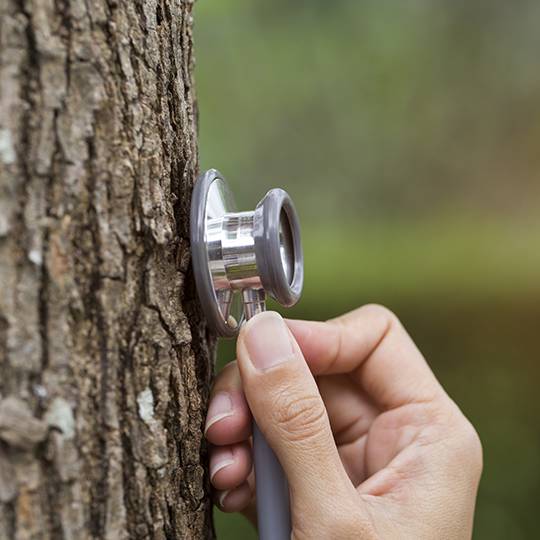Identifying Plant Issues
Is Your Plant Pleading for Help?
Posted
March 19, 2020

Maintaining healthy plants means more than regular pruning and watering. Learn how to identify different plant issues and determine if it’s caused by the environment, insects, or disease.
How to Identify Plant Issues
Typically you’ll know a plant is not doing well just by looking at it. If most of the leaves are discolored, drooping, or decimated, there’s a problem. The trick is knowing what caused the plant to react and how to get it healthy again. Plant issues can have a number of causes. Use the following factors to help weed certain issues out.
Environmental Issues
Many common plant problems are a result of poor light, water, and temperature conditions. For less durable plants, there’s a fine line between too much and too little of a good thing. If you notice any of the following signs, try to change the conditions to improve the situation.
- Weak growth. Either too much or too little light. The roots could also be drowning from too much watering and not enough drainage.
- Wilting leaves. Adjust the amount of water and make sure the roots are not rotting. Potted plants may just need a bigger pot.
- Discoloration. Check for signs of insects. Adjust the amount of light and don’t water it as much.
- Scorched or faded leaves. Take it out of direct sunlight.
- Brown leaf tips. It went too long without water.
Pest Problems
After you’ve altered the plant’s environment, check for signs of insects if you’re still having issues.
- Aphids: Tiny insects on the undersides of leaves that stunt plant growth and distort foliage.
- Mealybugs: White scale insect that lives on stems or undersides of leaves and stunt plant growth.
- Mites: Tiny, pale spiders create webbing on leaves and stems and can cause distorted yellow leaves.
- Scale: Round, brown insects on the leaves and stems that suck the plant’s juices and stunt growth.
- Thrips: Tiny insects feed on flowers and leaves, leaving them distorted or discolored.
- Whitefly: Gnat-like insects feed on leaves until they turn yellow or white.
Sometimes the best way to get rid of these pests is to remove them by hand and wipe off the affected areas.
Plant Diseases
After you’ve altered the environment and got rid of the pests, if your plants still show signs of distress then they may have a disease.
- Anthracnose. Leaf tips turn yellow then brown before they die. Remove the infected leaves and avoid misting the plant with water.
- Leaf spots. Fungal spots are brown with a yellow halo and kill portions or the entire leaf. Bacterial leaf spots look water-soaked. Remove the infected leaves and try not to get unaffected leaves wet. Improve the air circulation around your plant.
- Powdery mildew. A white, powdery fungal growth causes leaf distortion and drop. Remove infected leaves and make sure there’s enough air circulation and soil drainage.
- Root and stem rot: Stems and roots turn brown or black and feel very soft causing the plant to wilt and die. Make sure soil is draining properly and you’re not watering too much. Cut infected roots if possible.
How to Prevent Plant Issues
One of the best ways to keep a plant healthy and happy is to give it what it needs: proper light, temperature, food, and water. Different plants have different requirements, so you should familiarize yourself with the specific needs before making a purchase.
New plants also need time to adjust. If you’ve just brought one home or planted one from a nursery, don’t be surprised if it drops a few discolored leaves. It should bounce back. If it doesn’t, reread the signs described above or contact Elite Tree Care for more information.